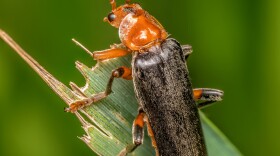Many types of animals in the world, insects included, have a distinctive appearance. A species of butterfly generally looks like a butterfly. A bumblebee has a bumblebee-like appearance.
But imagine if you mixed things up a bit — taking the back end of a wasp and combining it with the front end of a praying mantis. You’d get something exactly like the Wasp Mantisfly.
As the name suggests, Wasp Mantisflies look a lot like a wasp, but they have the head and front legs of a mantis. With such an appearance, they’ll certainly make you think twice about bothering them in fear of being stung. But unlike a real wasp, they don’t sting and are completely harmless.
Well … at least harmless to humans. To other insects they are formidable predators. Their front pair of legs function just like those of a praying mantis. They generally have their legs held together, under their chin, in the classic mantis “praying” pose.
Tending to hunt on or near flowers that are attracting other insects, their front legs are equipped with sets of spines to quickly strike out, locking into any suitable prey that wanders too close. While known to sometimes snack on pollen or sap, Mantisflies primarily consume a variety of insects — even other Mantisflies.
At only about an inch in length (unsurprisingly about the size of a wasp), these elusive predators are not commonly seen but can be found throughout most of the United States and southern Canada.
So, the next time you see an insect that is pretty unusual looking, remember the mantisfly and its half wasp, half mantis appearance, seemingly pieced together like the Frankenstein of the insect world.





